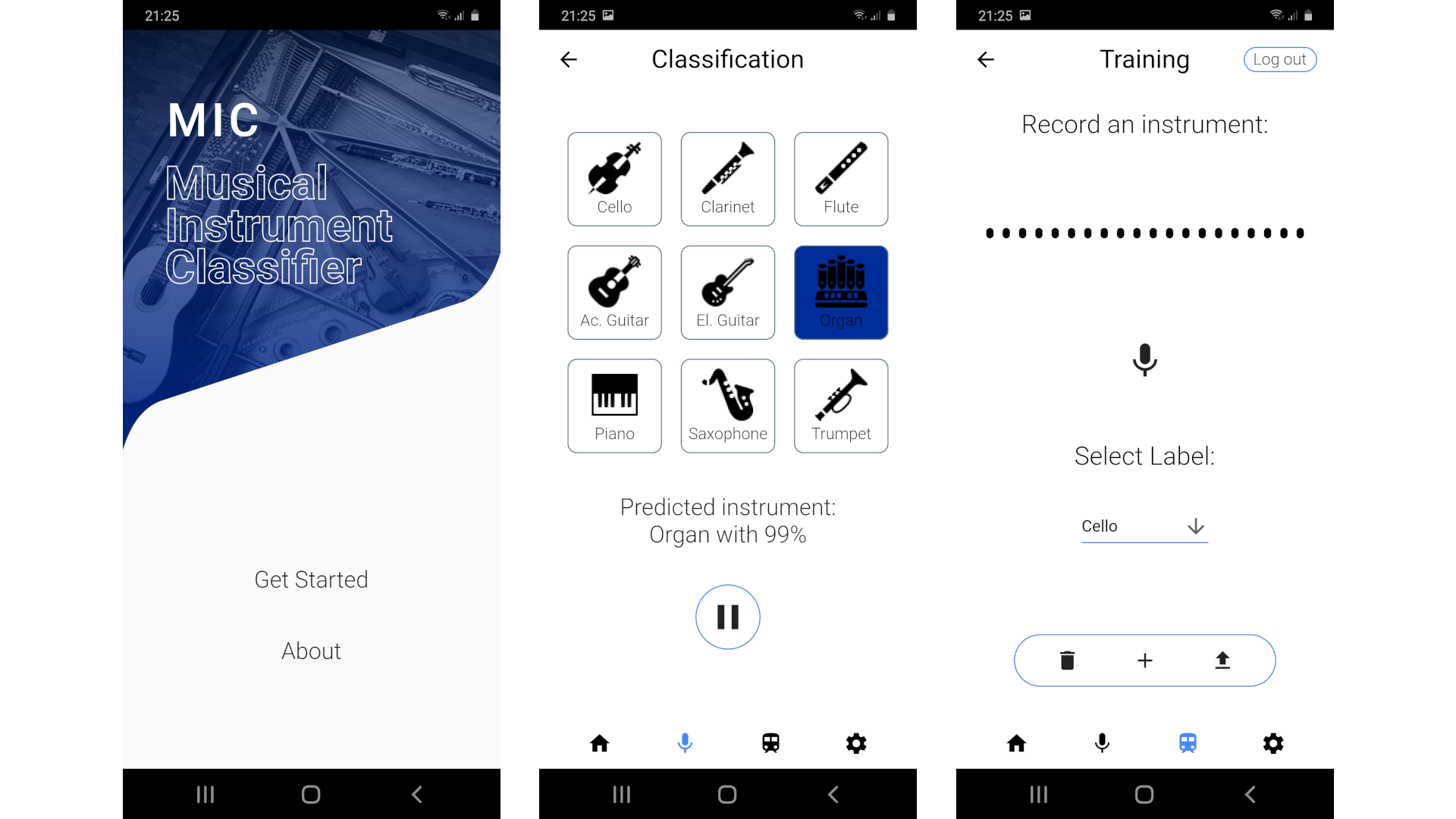Classifying Instruments
Bachelor's Thesis on Musical Instrument Classification
The objective of this work is to build a mobile application capable of classifying musical instruments in real-time. The rapid progress in machine learning prepared the way for its use on devices with limited computational resources. The main focus lies on the machine learning pipeline as a whole, describing every component of it and how they interact. This includes data preparation and feature engineering, architecting and training models, and finally, deployment as a mobile application. The tradeoff between accuracy and performance is examined with two approaches: The first relies on a set of handcrafted features, reducing the input dimension and resulting in a simpler neural network architecture. The second, end-to-end approach makes use of convolutional neural networks, introducing greater computational complexity while avoiding the need for extensive data preprocessing. Both models are initially trained on the IRMAS dataset and can be updated with new recordings using the mobile application. The end-to-end model surpassed the domain-feature approach in terms of accuracy at the cost of longer inferences times. Real-world tests showed that the inference is sufficiently fast in both cases resulting in an overall advantage of the end-to-end model.
The code can be found on GitHub.
